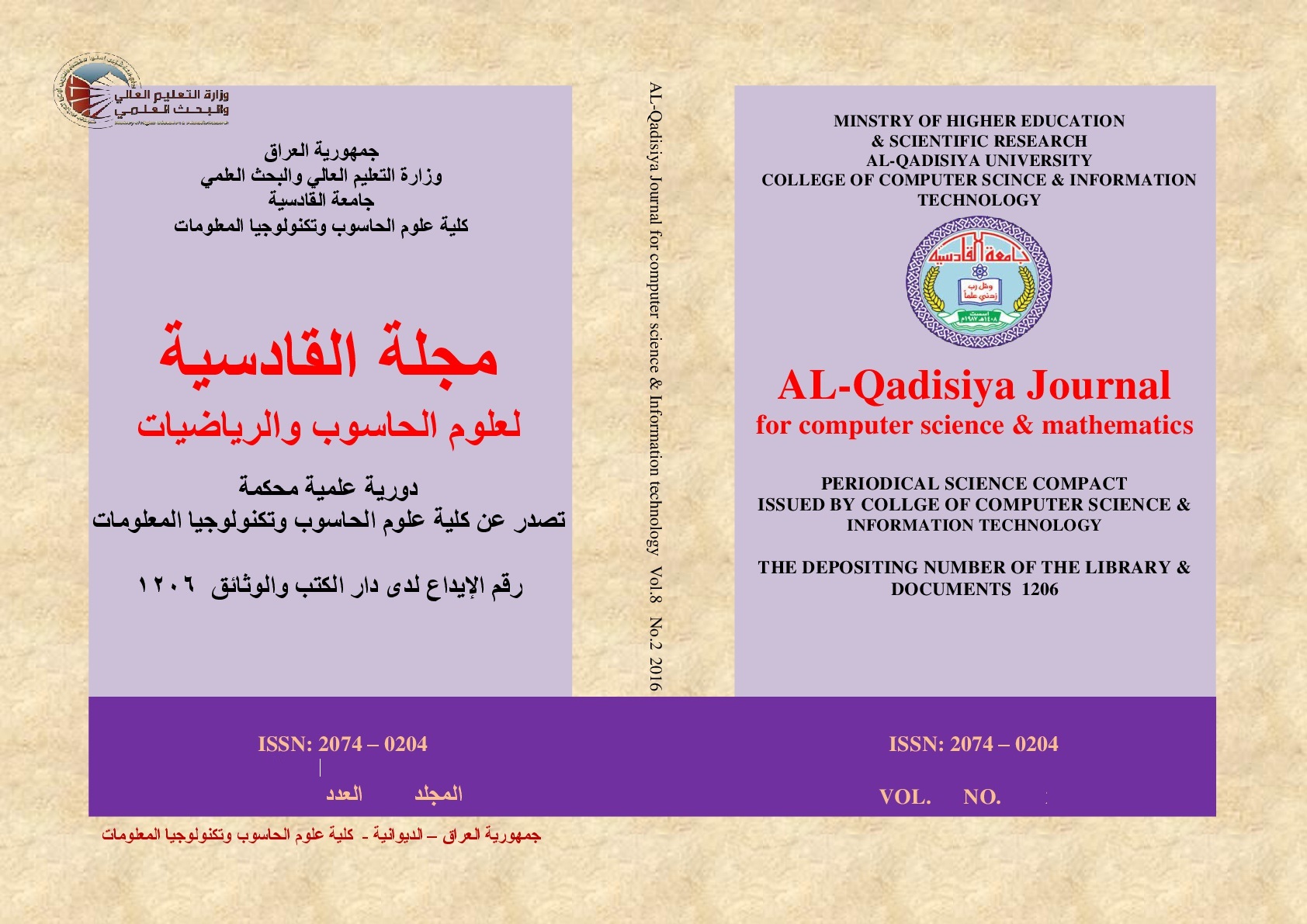Employing Machine Learning with Discriminative Function for Predict Heart Diseases
DOI:
https://doi.org/10.29304/jqcsm.2025.17.32379Keywords:
Heart disease, Discriminant Function PredictionAbstract
Heart disease is also one of the leading causes of death and therefore there is need to have a readily accurate way of diagnosing it. Based on this study, a strong basis of machine learning based on predicting heart disease has been proposed with the combination of ensemble learning algorithms (XGBoost, Random Forest, Gradient Boosting, and Extra Trees) and classic discriminant analysis based (Linear Discriminant Analysis (LDA) and Quadratic Discriminant Analysis (QDA)). The models were tested with two test benchmark datasets following rigorous pre-processing and feature engineering. The experimental findings show that XGBoost performed best in the first dataset with the accuracy of 98.54, perfect precision of 100 and the F1 score of 0.985. The best results by Random Forest on the second dataset, compared to the rest were 94.96 and the F1 score of 0.955. Comparatively, LDA achieved 82.44 and 87.39, accuracy rates out of the first and the second dataset respectively, whereas, QDA did not do as well in 54.15 and 44.96 respective accuracy levels. The results provided clearly indicate that compared to alternative discriminant models, machine learning models considerably outperformed the discriminant ones, which also shows that the XGBoost model would be the most suitable option in classifying the data. The outcomes confirm the usefulness of machine learning as a reliable and accurate diagnostic aid in detecting preliminary heart diseases in the clinical setting.
Downloads
References
M. M. Hussain, U. Rafi, A. Imran, M. U. Rehman, and S. K. Abbas, “Risk factors associated with cardiovascular disorders: Risk factors associated with cardiovascular disorders,” Pakistan BioMedical Journal, vol. 6, no. 07, (2024), pp. 03–10.
C. Wang, Y. Sun, D. Jiang, C. Wang, and S. Liu, “Risk-attributable burden of ischemic heart disease in 137 low-and middle-income countries from 2000 to 2019,” *Journal of the American Heart Association*, vol. 10, no. 19, (2021), p. e021024.
J. E. Brush, J. Sherbino, and G. R. Norman, “Diagnostic reasoning in cardiovascular medicine,” *BMJ*, vol. 376, (2022).
F. Yasmin, S. M. I. Shah, A. Naeem, S. M. Shujauddin, A. Jabeen, S. Kazmi, and H. M. Lak, “Artificial intelligence in the diagnosis and detection of heart failure: the past, present, and future,” *Reviews in Cardiovascular Medicine*, vol. 22, no. 4, (2021), pp. 1095–1113.
D. Mohajan and H. K. Mohajan, “Obesity and its related diseases: a new escalating alarming in global health,” *Journal of Innovations in Medical Research*, vol. 2, no. 3, (2023), pp. 12–23.
B. Bhusal, “Poor diet leading to the increasing risk of atherosclerosis in the world,” *Journal of Cardiology and Cardiovascular Medicine*, vol. 9, no. 3, (2024), pp. 142–147.
L. Laranjo, F. Lanas, M. C. Sun, D. A. Chen, L. Hynes, T. F. Imran, and C. K. Chow, “World Heart Federation roadmap for secondary prevention of cardiovascular disease: 2023 update,” *Global Heart*, vol. 19, no. 1, (2024), p. 8.
M. Allahbakhshi, A. Sadri, and S. O. Shahdi, “Diagnosis of parkin- son’s disease using eeg signals and machine learning techniques: A comprehensive study,” arXiv preprint arXiv:2405.00741, (2024).
F. Yasmin, S. M. I. Shah, A. Naeem, S. M. Shujauddin, A. Jabeen, S. Kazmi, S. A. Siddiqui, P. Kumar, S. Salman, S. A. Hassan et al., “Artificial intelligence in the diagnosis and detection of heart failure: the past, present, and future,” *Reviews in Cardiovascular Medicine*, vol. 22, no. 4, (2021), pp. 1095–1113.
H. Li, M. Jia, and Z. Mao, “Dynamic feature extraction-based quadratic discriminant analysis for industrial process fault classification and diagnosis,” *Entropy*, vol. 25, no. 12, (2023), p. 1664.
M. Abdelsayed, E. J. Kort, S. Jovinge, and M. Mercola, “Repurposing drugs to treat cardiovascular disease in the era of precision medicine,” *Nature Reviews Cardiology*, vol. 19, no. 11, (2022), pp. 751–764.
Y. Zhang, J. Liu, and W. Shen, “A review of ensemble learning algorithms used in remote sensing applications,” *Applied Sciences*, vol. 12, no. 17, (2022), p. 8654.
M. M. Ali, V. S. Al-Doori, N. Mirzah, A. A. Hemu, I. Mahmud, S. Azam, K. F. Al-Tabatabaie, K. Ahmed, F. M. Bui, and M. A. Moni, “A machine learning approach for risk factors analysis and survival prediction of heart failure patients,” *Healthcare Analytics*, vol. 3, (2023), p. 100182.
A. M. Tushar, A. Wazed, E. Shawon, M. Rahman, M. I. Hossen, and M. Z. H. Jesmeen, “A review of commonly used machine learning classifiers in heart disease prediction,” in *Proceedings of the 2022 IEEE 10th Conference on Systems, Process & Control (ICSPC)*, (2022), pp. 319–323.
M. Ozcan and S. Peker, “A classification and regression tree algorithm for heart disease modeling and prediction,” *Healthcare Analytics*, vol. 3, (2023), p. 100130.
D. Shrestha, “Advanced machine learning techniques for predicting heart disease: A comparative analysis using the Cleveland Heart Disease Dataset,” *Applied Medical Informatics*, vol. 46, no. 3, (2024).
P. Sujatha and K. Mahalakshmi, “Performance evaluation of super- vised machine learning algorithms in prediction of heart disease,” in 2020 IEEE international conference for innovation in technology INOCON. (2020), pp. 1–7.
G. Ambrish, B. Ganesh, A. Ganesh, C. Srinivas, K. Mensinkal, and K. Shashikala, “Logistic regression technique for prediction of cardiovascular disease,” *Global Transitions Proceedings*, vol. 3, no. 1, (2022), pp. 127–130.
M. S. Gangadhar, K. V. S. Sai, S. H. S. Kumar, K. A. Kumar, M. Kavitha, and S. Aravinth, “Machine learning and deep learning techniques on accurate risk prediction of coronary heart disease,” in *Proceedings of the 2023 7th International Conference on Computing Methodologies and Communication (ICCMC)*, (2023), pp. 227–232.
T. E. Mathew, “An optimized extremely randomized tree model for breast cancer classification,” *Journal of Theoretical and Applied Information Technology*, vol. 100, no. 16, (2022), pp. 5234–5246.
P. Rahi and S. S. Kang, “A novel paradigm in cardiovascular disease risk prediction through hybrid machine learning,” *Системная инженерия и информационные технологии*, (2025), pp. 49–66.
A. Almotairi, S. Atawneh, O. A. Khashan, and N. M. Khafajah, “Enhancing intrusion detection in IoT networks using machine learning-based feature selection and ensemble models,” *Systems Science & Control Engineering*, vol. 12, no. 1, (2024), p. 2321381.
H. A. Al-Jamimi, “Early prediction of heart disease risk using extreme gradient boosting: a data-driven analysis,” *International Journal of Biomedical Engineering and Technology*, vol. 45, no. 4, (2024), pp. 296–313.
M. Feng, X. Wang, Z. Zhao, C. Jiang, J. Xiong, and N. Zhang, “Enhanced heart attack prediction using extreme gradient boosting,” *Journal of Theory and Practice of Engineering Science*, vol. 4, no. 04, (2024), pp. 9–16.
L. Qu and Y. Pei, “A comprehensive review on discriminant analysis for addressing challenges of class-level limitations, small sample size, and robustness,” *Processes*, vol. 12, no. 7, (2024), p. 1382.
R. Johnston, “Discriminant analysis,” in *Encyclopedia of Quality of Life and Well-Being Research*, (2024), pp. 1845–1847.
S. Zhao, B. Zhang, J. Yang, J. Zhou, and Y. Xu, “Linear discriminant analysis,” *Nature Reviews Methods Primers*, vol. 4, no. 1, (2024), p. 70.
R. R. Isnanto, I. Rashad, and C. E. Widodo, “Classification of heart disease using linear discriminant analysis algorithm,” in *E3S Web of Conferences*, vol. 448, (2023), p. 02053.
E. Sivari and S. Sürücü, “Prediction of heart attack risk using linear discriminant analysis methods,” *Journal of Computer, Electrical and Electronics Engineering Sciences*, vol. 1, no. 1, (2023), pp. 5–9.
A. Rajarathinam, “Discriminant analysis for heart disease attributes,” *International Journal of Statistics and Applied Mathematics*, vol. 9, no. 2, (2024), pp. 180–188.
M. U. Aslam, S. Xu, S. Hussain, M. Waqas, and N. L. Abiodun, “Machine learning-based classification of valvular heart disease using cardiovascular risk factors,” *Scientific Reports*, vol. 14, no. 1, (2024), p. 24396.
H. P. Wibowo, M. Anshori, and M. S. Haris, “The discriminant analysis function was implemented to predict the presence of diabetes,” *Journal of Enhanced Studies in Informatics and Computer Applications*, vol. 1, no. 2, (2024), pp. 47–55.
Downloads
Published
How to Cite
Issue
Section
License
Copyright (c) 2025 Firas Abdulrahman Yousif, Rasha Raad Al-Mola; Muthanna Subhi Sulaiman

This work is licensed under a Creative Commons Attribution-NonCommercial-NoDerivatives 4.0 International License.













